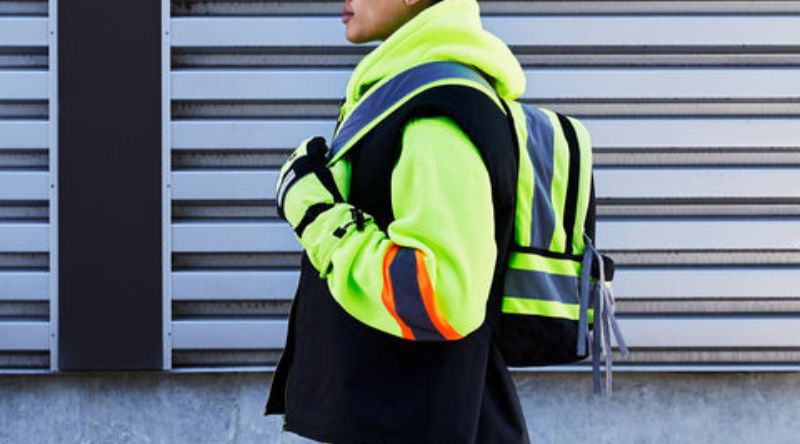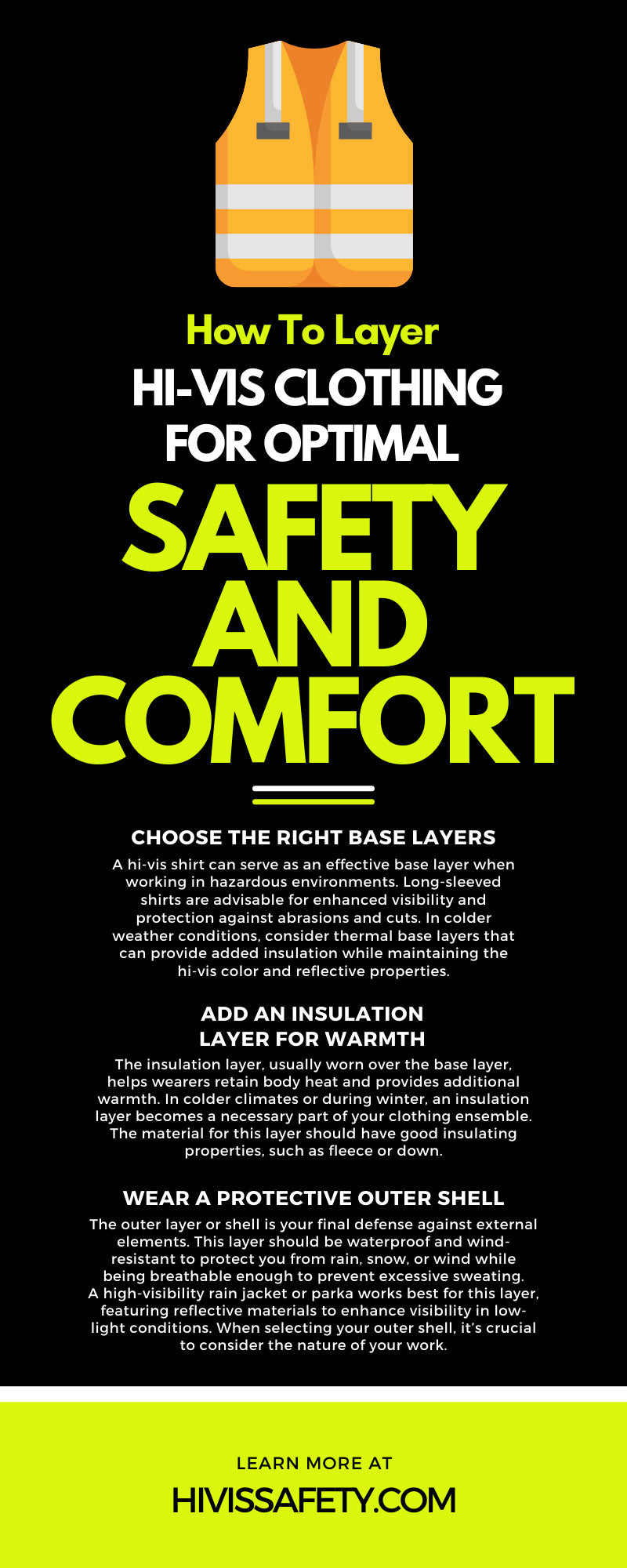
When it comes to ensuring safety and visibility in hazardous work environments, high-visibility (hi-vis) clothing is an essential tool. However, choosing the right hi-vis wear is just the beginning; how you layer these garments can significantly affect your safety and comfort.
Let’s explore how to layer hi-vis clothing for optimal safety and comfort to ensure your protection in any work situation.
Choose the Right Base Layers
The base layers are the foundation of your outfit and sit closest to your skin. Thus, they should be breathable, lightweight, and moisture-wicking to keep you dry and comfortable throughout the day. Materials such as polyester, nylon, or merino wool are excellent choices.
A hi-vis shirt can serve as an effective base layer when working in hazardous environments. Long-sleeved shirts are advisable for enhanced visibility and protection against abrasions and cuts. In colder weather conditions, consider thermal base layers that can provide added insulation while maintaining the hi-vis color and reflective properties.
It’s essential to note that each layer should offer high-visibility traits to maintain maximum visibility. Your safety should not be compromised, even if you have to remove a layer due to changing temperatures or work conditions. Therefore, it’s best to ensure that your base layers offer high visibility.
Add an Insulation Layer for Warmth
The insulation layer, usually worn over the base layer, helps wearers retain body heat and provides additional warmth. In colder climates or during winter, an insulation layer becomes a necessary part of your clothing ensemble. The material for this layer should have good insulating properties, such as fleece or down.
A fleece jacket or vest with reflective stripes can be a great insulation layer for hi-vis clothing. Remember that this layer should also adhere to the high-visibility standards and regulations applicable to your work environment. You may even consider a thermal jacket with hi-vis elements if working in particularly harsh conditions. As with the base layer, the insulation layer should be easy to remove or adjust in accordance with changing weather or activity levels and ensure constant comfort and safety.
Wear a Protective Outer Shell
The outer layer or shell is your final defense against external elements. This layer should be waterproof and wind-resistant to protect you from rain, snow, or wind while being breathable enough to prevent excessive sweating. A high-visibility rain jacket or parka works best for this layer, featuring reflective materials to enhance visibility in low-light conditions. When selecting your outer shell, it’s crucial to consider the nature of your work.
For instance, if you’re working with heavy machinery or in locations with a lot of moving traffic, opt for jackets with tear-away features. These jackets can rip off easily if caught in machinery, preventing accidents and injuries. As always, the outer shell should comply with visibility standards and regulations relevant to your work. By carefully selecting and layering your hi-vis clothing, you can ensure optimal safety and comfort, no matter the work environment or weather conditions.
Accessorize for Tasks and Conditions
In addition to the base, insulation, and outer layers, accessorizing your hi-vis outfit with appropriate safety gear can significantly boost your protection in various work conditions. Hard hats, gloves, and safety boots should be part of your ensemble in construction or industrial environments. Notably, these accessories are also available in high-visibility colors and reflective materials.
For colder weather, hi-vis beanies, scarves, and thermal gloves can provide extra warmth without compromising visibility. In low-light conditions or during night work, consider using accessories with built-in lights, such as headlamps or light-up armbands, to enhance your visibility. Lastly, always regularly check and replace these accessories to ensure optimal performance and safety.
Properly layering and accessorizing your hi-vis clothing can maximize your protection and comfort, catering to task requirements and weather conditions.
Layer for Mobility and Flexibility
While layering is essential for safety and comfort, it’s equally important to consider your range of movement. Over-layering can restrict mobility, making it difficult to perform tasks efficiently, while under-layering can expose you to hazards. Look for high-visibility garments that provide a balance between protection and flexibility. For instance, jackets with articulated elbows, vests with side stretch panels, or trousers with knee flex zones can enhance mobility.
If your work involves a lot of bending or lifting, opt for garments with elasticated waists or adjustable cuffs. Remember, each layer should be as functional as it is protective. By carefully considering each layer, from base to outer, and assessing their impact on your movement, you can ensure a safe, comfortable, and productive work day.
Consider Your Company’s Requirements
It’s crucial to remember your company’s specific safety requirements and dress code regulations when choosing your hi-vis clothing layers. These requirements may include certain colors, reflective materials, or safety certifications. Always ensure your selection of hi-vis attire adheres to these rules. It’s advisable to consult with your supervisor or safety officer to understand these requirements fully.
Furthermore, your company might also provide specific high-visibility clothing tailored to your role’s needs and work environment. Emphasizing the correct use of such attire is beneficial, as doing so ensures consistent employee protection. A well-rounded safety protocol that includes the proper use and maintenance of hi-vis clothing can significantly enhance workplace safety, ultimately fostering an environment that prioritizes the well-being of its employees.
Choosing the right high-visibility clothing involves more than selecting garments in bright, reflective colors. It requires understanding your work environment, task requirements, and weather conditions to build a layered ensemble that optimizes safety and comfort. Always consider each layer’s functionality, balancing protection and mobility. Furthermore, adhering to your company’s specific safety requirements and dress code regulations is essential. Adopting a systematic approach to selecting, layering, and maintaining your hi-vis attire can significantly enhance your job visibility, safety, and productivity.
If you need high-visibility rain jackets or other accessories for your work environment, check out our selection at Hi Vis Safety. We offer a variety of high-quality hi-vis garments and accessories to meet your specific needs while also adhering to industry safety standards and regulations. Stay safe, comfortable, and visible on the job with Hi Vis Safety.

